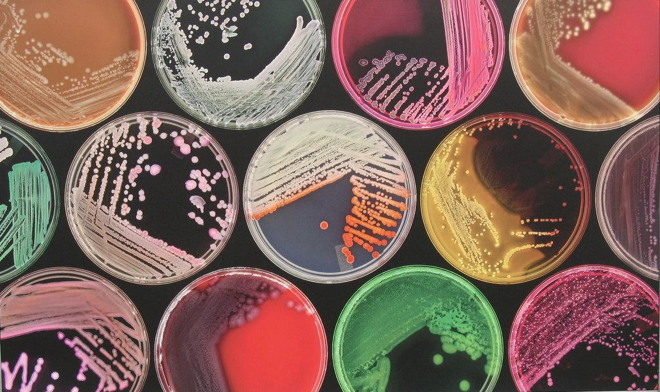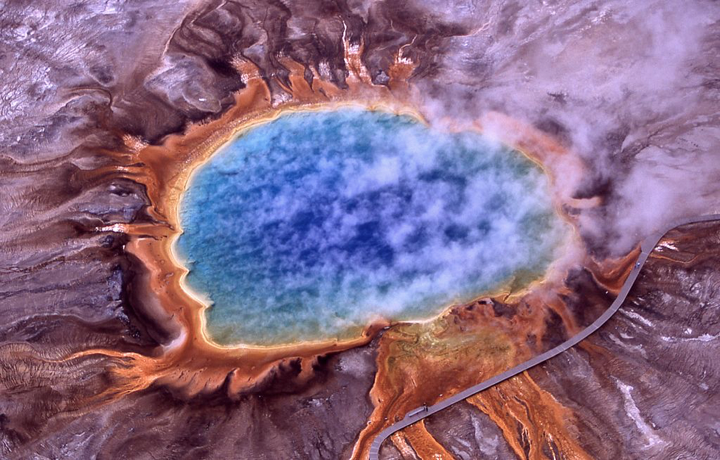Surrounded by Cells: Discovering—and Rediscovering—Earth’s Microbiome

Petri dishes with bacteria cultures. Photo: M.J. Richardson/Invisible Worlds exhibition 2012.
BERKELEY, California—The more places we look, the more microbes we find.
These tiny organisms—bacteria, Archaea, protozoa and fungi, to name a few—are essentially everywhere. Using recent advances in gene sequencing, scientists can now sample microorganisms directly in their natural environments to reveal their identities, rapidly and without targeting any particular type of cell.
This sweeping approach, called metagenomics, has led to a profound number of discoveries, greatly expanding the microbial “Tree of Life”. And in a way, we live in an era of microbial rediscovery as well: Scientists have detected many species before, but only now do we have their genetic maps.
Leading researchers in this burgeoning field presented their work at the University of California, Berkeley, on 29 October during the World Conference of Science Journalists 2017, in a session titled “Exploring and Managing Earth’s Microbiome.”
Microbes everywhere
Microbes thrive in a vast array of environments around the planet. They are found in abundance in soils, hot springs, the deep ocean seafloor, and recently in human blood. The organisms benefit us in many ways, from wastewater treatment and bioremediation of pollution to genome editing and conferring immunity against disease.
Metagenomics has allowed scientists to find new microbes at an incredible pace. For instance, in recent years a team led by microbiologist Jill Banfield of UC Berkeley has discovered the identities of more than 1,000 types of bacteria and Archaea—organisms that resemble bacteria and are known for inhabiting extreme environments.
The newly discovered “candidate phyla radiation” contains half of all bacterial diversity.
These nano microbes live on other microbes, Banfield said. About 150,000 of the cells would span the width of a human hair.
“They are very abundant in groundwater, and only three groups known to date occur in the human body, primarily in the mouth,” said Banfield.

Extreme heat-loving microbes produce the colors of the Grand Prismatic Spring in Yellowstone National Park. Photo: Jim Peaco/U.S. National Park Service
The microbes found in our environment can also shape our immune systems in early childhood. For many people living in the Western Hemisphere, the microbes we are exposed to as children have implications for our diseases later in life, said microbiologist Susan Lynch of UC San Francisco.
Infants now spend around 90% of their time indoors. But rates of asthma and allergies are increasing, and genetic factors alone cannot account for that. “The origin of the disease may be in part be microbiological dysfunction,” said Lynch.
Studies have identified one factor that offers protection from allergies and asthma: early childhood exposure to animals. In a study of young children reported in the Journal of the American Medical Association, those that were exposed to two or more dogs in their homes developed fewer cases of allergies or asthma. The presence of dogs broadened the breadth of bacteria in the house dust of these homes.
A related study in mice revealed the beneficial bacteria Lactobacillus johnsonii—known for its immunity benefits—in abundance within the guts of non-allergenic mice previously exposed to dog dust.
Understanding the health impact of new microbes
Lynch closed the session by referring to a recent study of children in Detroit. About 11% of the infants in that study suffered from allergies; a common thread among these children and their mothers was the absence of exposure to microbial pet dust.
It will take years to understand the health impact of the new microbes unveiled by metagenomics, not to mention their possible applications. For now, the panelists noted, we are closing in on mapping the full extent of these organisms.
“In the last year and a half, we found a few more lineages, but we are not finding new phyla in every new environment.” Banfield said. “We are on a trajectory to closure.”
—
Anna Katrina Hunter is a science communicator and graduate student in the UC Santa Cruz Science Communication Program. When not nerding out on bees and other aspects of the natural world, she can be reached at akhunter@ucsc.edu.
